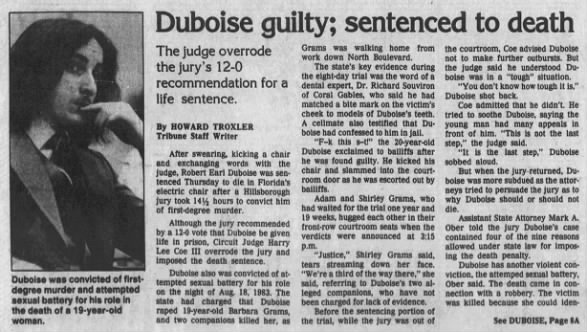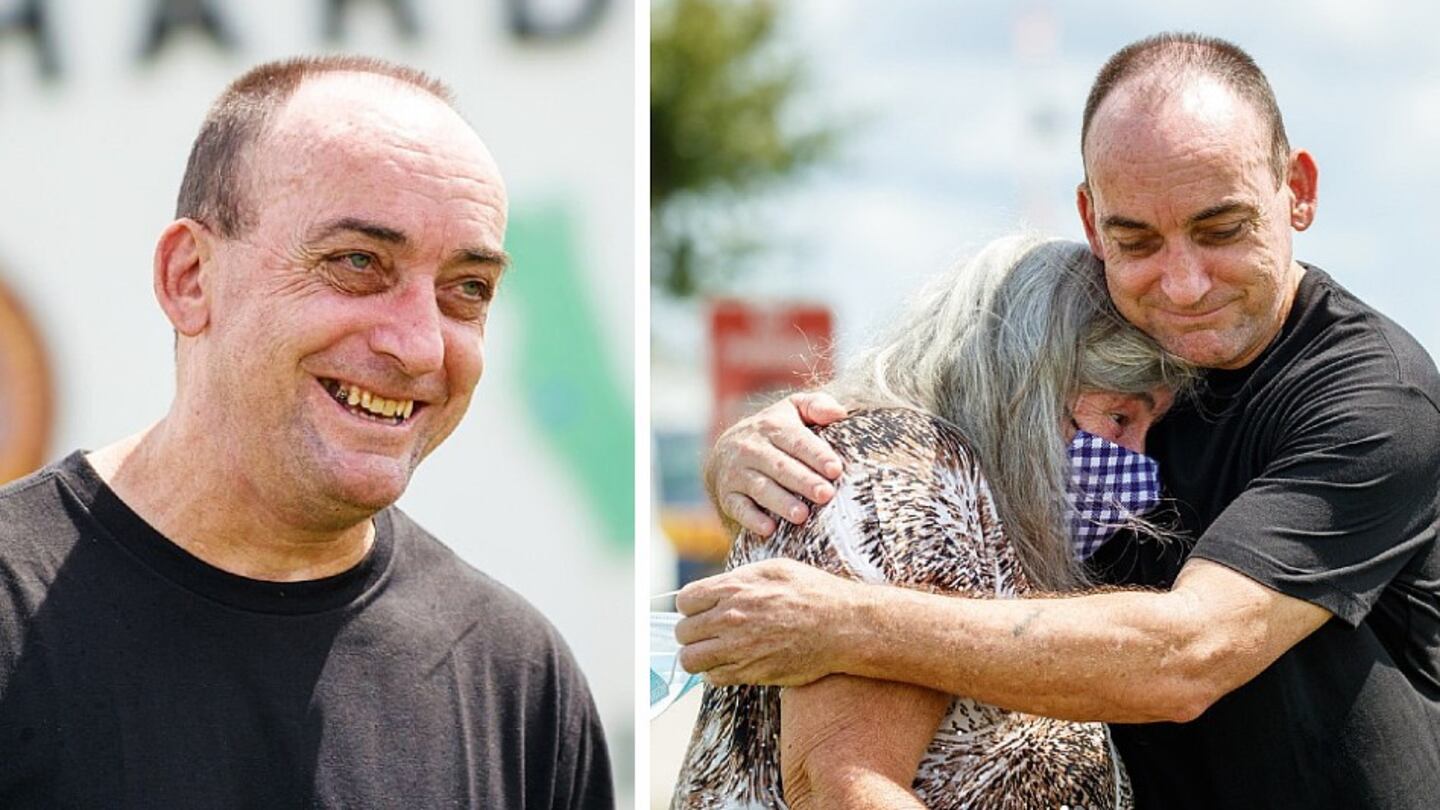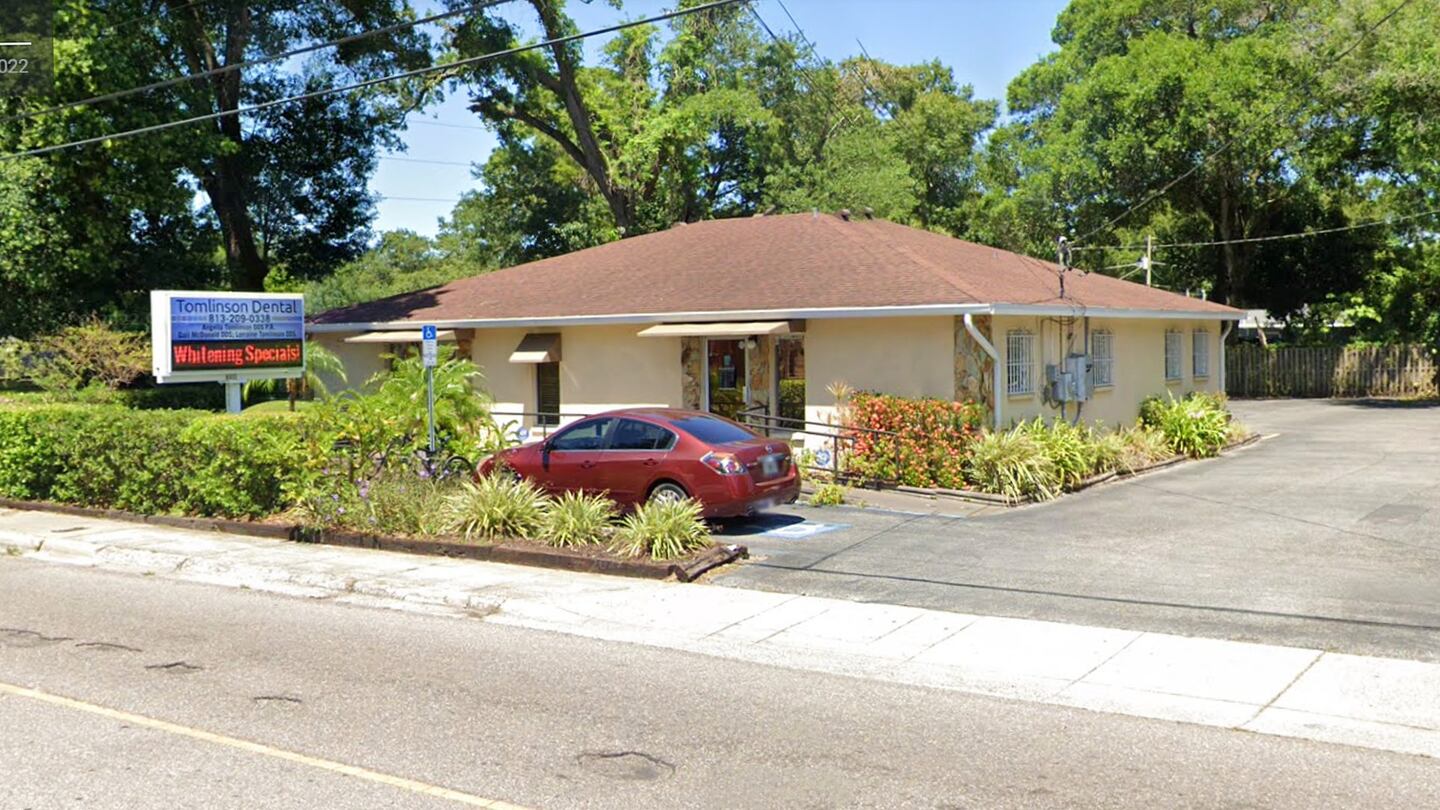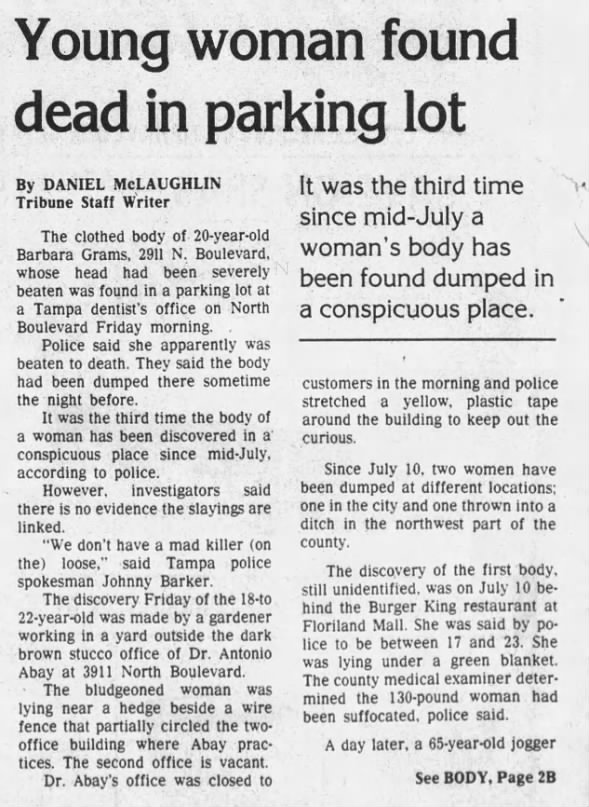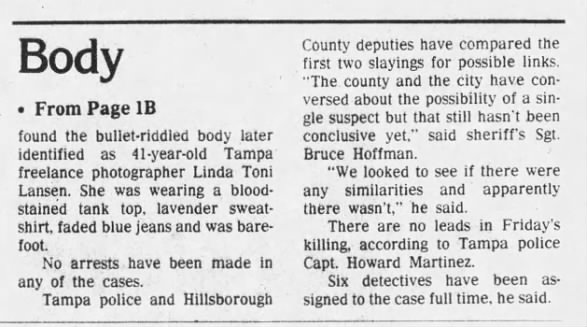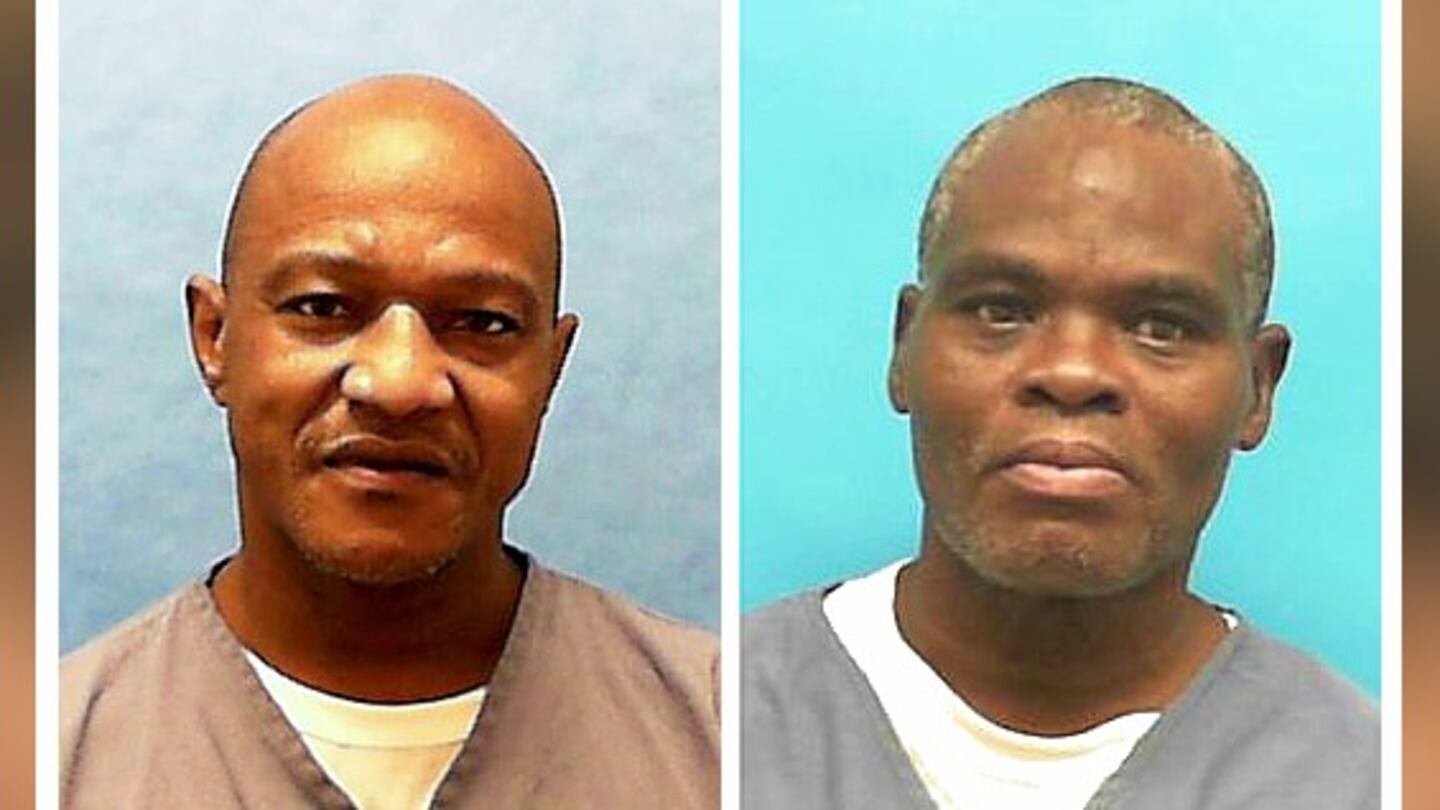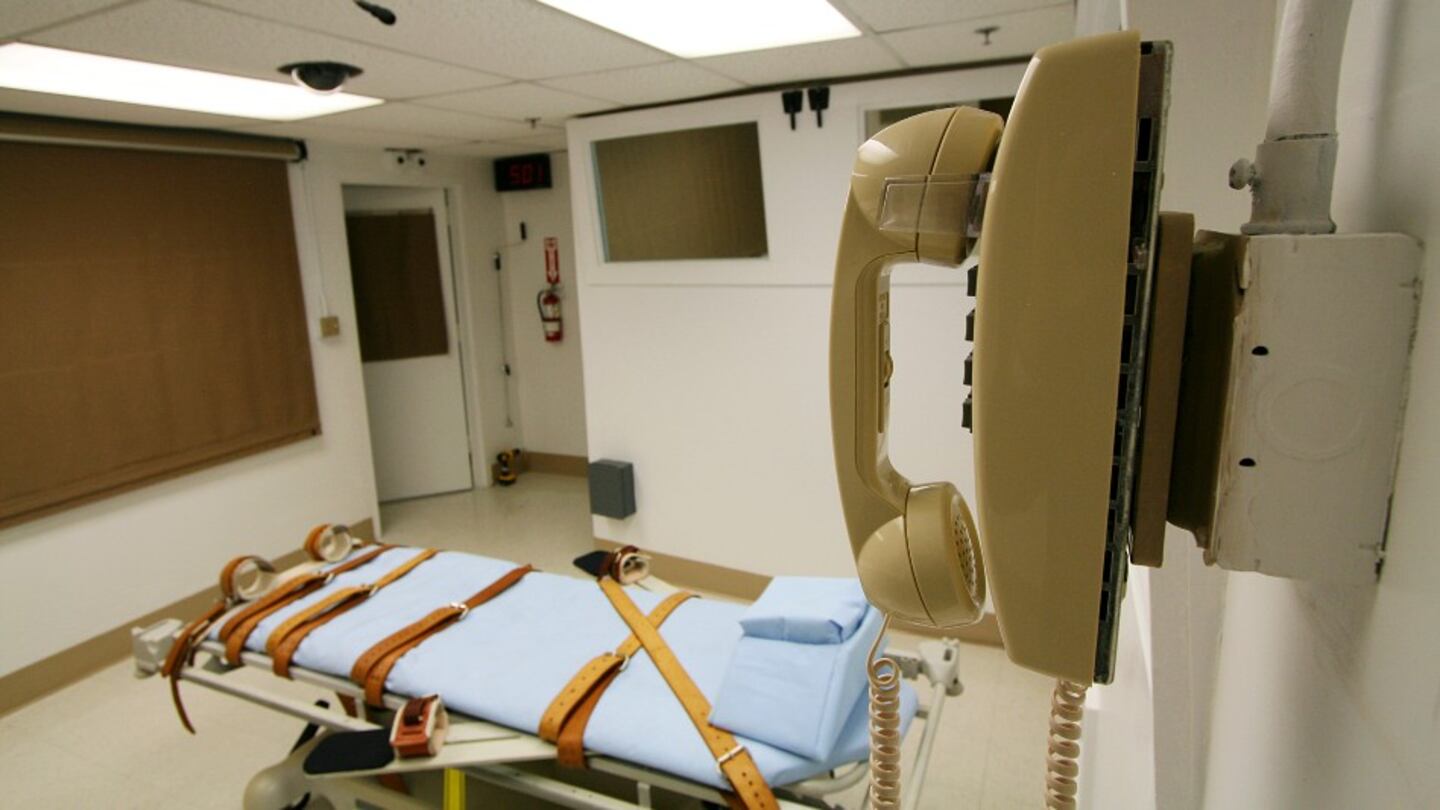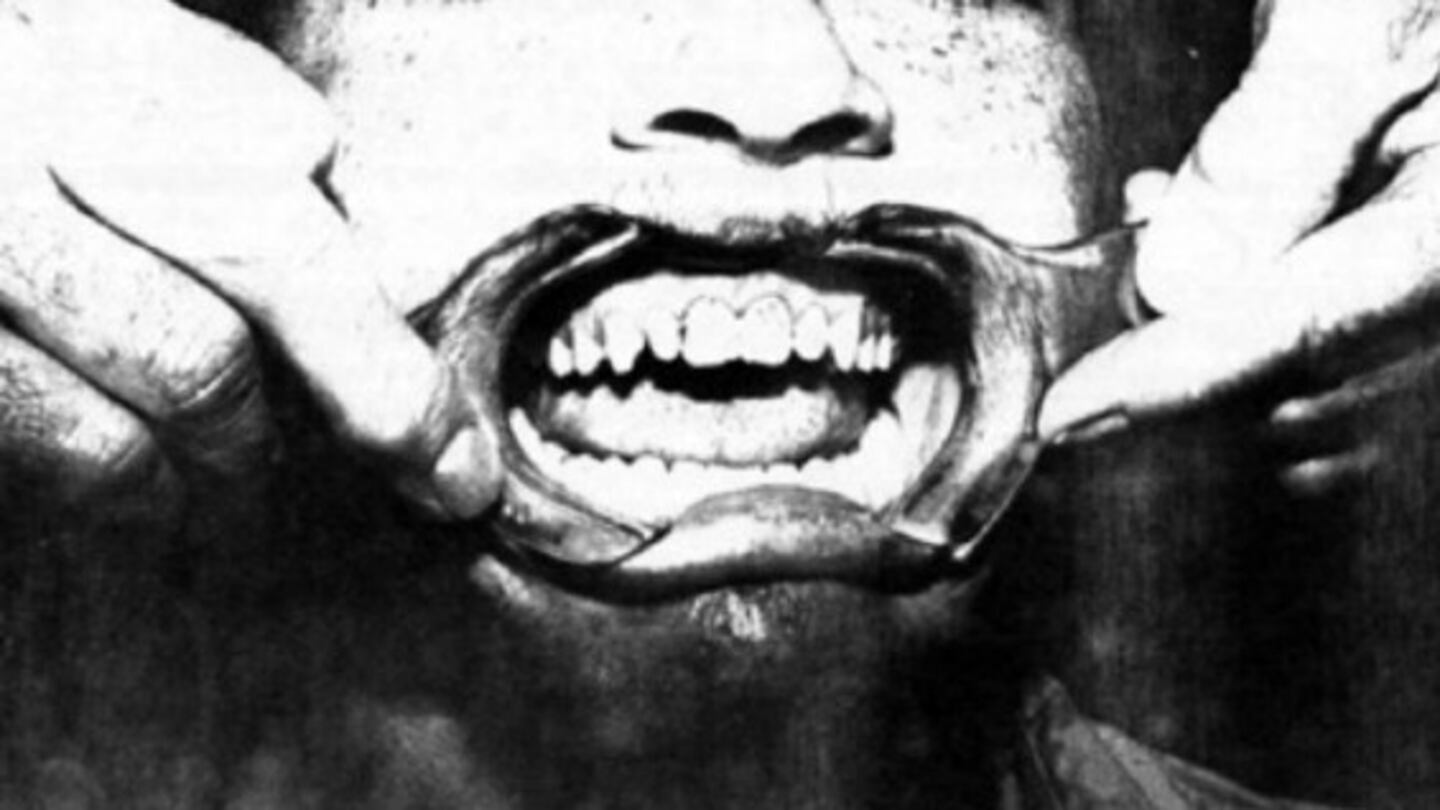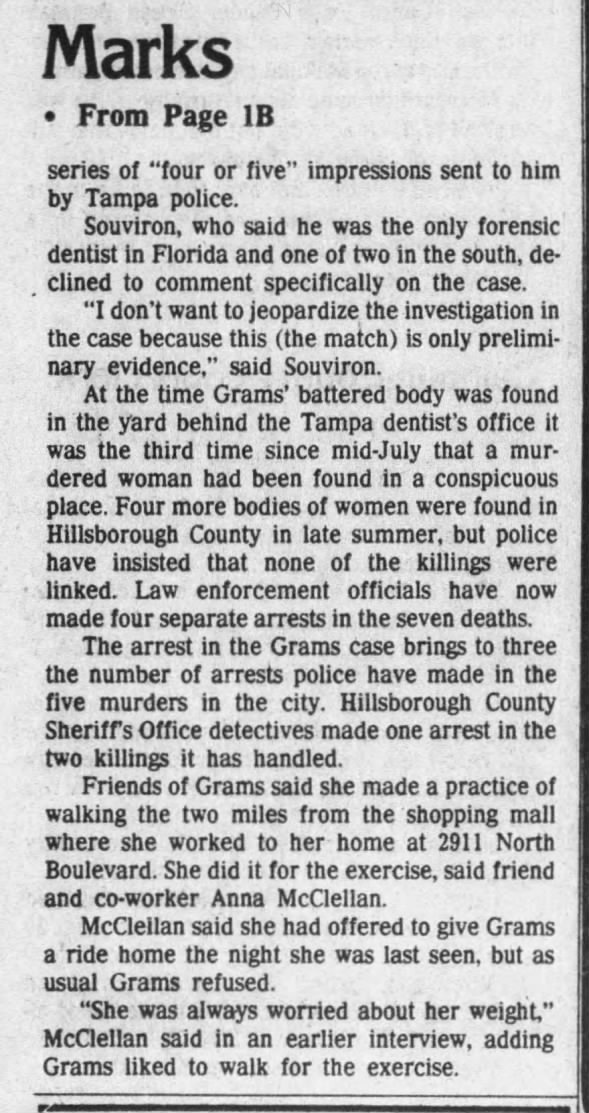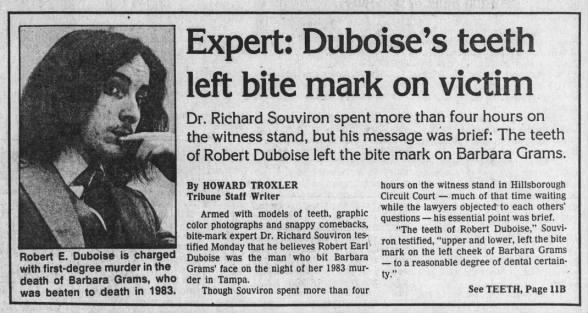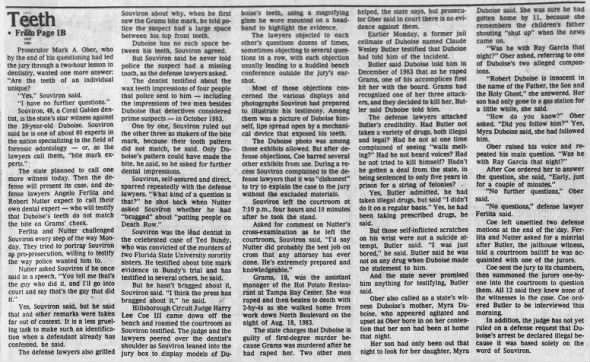TAMPA, Fla. — Two convicted murderers serving life sentences in Florida were identified Thursday as the alleged killers of a woman whose 1983 rape and murder put the wrong man behind bars for nearly 37 years.
Abron Scott, 57, and Amos Earl Robinson, 59, are each charged with first-degree murder in the Aug. 18, 1983, rape and beating death of Barbara Grams, 19, of Tampa.
Grams, who was slain as she walked home from work, was found bludgeoned in the parking lot of a dental office 10 blocks from her house, the Tampa Tribune reported at the time. She had been beaten with a piece of a two-by-four.
Robinson and Scott have also been charged in a second cold case homicide from that same year, Hillsborough County authorities said.
Freelance photographer Linda Toni Lansen left her apartment the evening of July 10, about five weeks before Grams was slain, and never returned. Her body was discovered the next morning in a ditch in the Town N’ Country area of Hillsborough County.
Lansen had been raped and shot multiple times, according to police.
While Lansen’s case has remained cold for nearly four decades, it took about two months for Hillsborough County authorities to arrest a suspect in Grams’ murder. Robert Earl DuBoise, then 18, was arrested Oct. 22, 1983, and charged in the brutal killing.
DuBoise was convicted in 1985 of capital murder and attempted sexual battery based upon faulty bite mark evidence and the word of a jailhouse informant. The bite mark expert who testified against him, Dr. Robert Souviron, was also instrumental in securing the capital murder conviction that put serial killer Ted Bundy on Florida’s Death Row.
Bundy, who was executed in 1989 for the 1978 murder of 12-year-old Kimberly Leach, also left bite marks on at least one of his victims.
Like Bundy, DuBoise ended up on Death Row after the judge in his case overruled jurors’ recommendation that he serve life in prison. His death sentence was later commuted to life in prison without parole.
The Innocence Project took on DuBoise’s case in 2018. He was exonerated in 2020 after testing of the DNA evidence in the case proved two other men — and not DuBoise — were responsible for Grams’ murder.
That same evidence implicated Robinson and Scott in Grams’ slaying, according to authorities.
“The two men who actually killed Barbara Grams 39 years ago have been identified,” State’s Attorney Andrew Warren said Thursday, according to Bay News 9. “They are still alive, and they will finally face a reckoning for what they’ve done.
“And, in another breakthrough for justice, we have discovered these two men also committed another rape and murder in 1983, taking the life of Linda Lansen. Today, we can deliver answers for Linda’s family and peace for her soul.”
Warren announced the indictments against the men despite his suspension earlier in the day by Gov. Ron DeSantis. In suspending the prosecutor, DeSantis cited Warren’s stance on abortion bans and gender-affirming care for transgender minors.
Watch Thursday’s news conference below, courtesy of WFLA in Tampa.
Lansen’s niece and namesake, Linda Sheffield, also spoke at the news conference.
“She was my role model, she was a very strong, determined, warm and wonderful woman, that I personally depended on growing up,” Sheffield said, according to WFLA in Tampa. “She taught me to count to 100, she taught me to put on makeup. We go back, it was the beginning of my life, it was everything. They not only robbed me, but they robbed a 7-year-old girl of her mother.”
A vicious string of crimes
“We now know that these two men carried out a sinister spree of rape and murder in Tampa Bay in the summer and fall of 1983,” Warren said, according to the news station.
Lansen is the first of the victims attributed to Robinson and Scott. A New York native who had moved to Tampa as an adult, she was living in an apartment near Sligh Avenue and Rowlett Park Drive when she vanished July 10, 1983.
A jogger found her “bullet-riddled” body the next morning, the Tribune reported in 1983. She was barefoot, wearing a bloodstained tank top, a lavender sweatshirt and jeans.
Lansen’s destination when she left home was unknown, and it was unclear where she crossed paths with her alleged killers. The Tampa Bay Times reported that her body was dumped about 13 miles from her home.
Her car was found the day after her body, parked on a residential street 9 miles away. Her purse was later found along a Clearwater roadside.
Grams, who was assistant manager at the Hot Potato restaurant in the now-defunct Tampa Bay Center, was walking home weeks later, on Aug. 18, when she was slain. A friend and coworker told the Tribune that Grams walked the 2 miles to and from work for the exercise.
“She was always worried about her weight,” Anna McClellan told the newspaper. “She thought she was overweight, but she was about the right size for her height. That’s why she was walking home that night.”
McClellan said she sometimes gave Grams a ride home when she was tired or it was raining, since she and her husband lived in the same neighborhood as Grams. The night she died, however, Grams had declined the offer.
Grams made it within blocks of home before she was slain.
McClellan said when she awoke the next day to learn a woman’s body had been found behind a dentist’s office nearby, her instincts caused her to worry over whether it was her friend. When she walked to the crime scene, her instincts were proven correct.
“I walked down there and saw the police,” she said. “I explained to them who I was, and they started asking me questions.
“The cops kept shaking their heads, and then they took pictures of her and I knew it was Barbara.”
At the time, police officials discounted fears that the killings were related.
“We don’t have a mad killer (on the) loose,” Tampa police spokesman Johnny Baker told the Tribune.
According to authorities, Robinson and Scott next struck on Sept. 5, 1983, when the body of Hermenia Castro was found in a vacant lot in East Tampa.
“She had been shot and put in the trunk of a car, which was then set on fire,” Warren said Thursday.
Robinson and another man were initially charged in the Castro case, but the charges were dismissed due to a lack of evidence.
He and Scott are serving life sentences for their next alleged crime: the Oct. 22, 1983, murder of Carlos Orellana.
Orellana, 33, was a Honduras native who had lived in Tampa since the early 1970s. According to the Times, he was an office manager and part-time shoe salesman.
The early morning of Oct. 22, Orellana was getting into his 1980 Toyota Celica when he was accosted by Robinson and Scott outside a bar on Kennedy Boulevard. The Times reported that the men beat Orellana into unconsciousness and shoved him into the back seat of his car.
They then drove to an isolated area in Oldsmar, where the newspaper and court records indicate the beating continued. Orellana fought back as he was pulled from the vehicle, which Robinson then tried to use to run over Orellana.
He stopped to avoid hitting Scott, who was beating and choking Orellana, the Times reported. According to court records, Scott then got behind the wheel of the Celica and used it to kill Orellana.
Newspaper accounts indicate that the car got stuck in the sand — with Orellana pinned underneath. Two unsuspecting drivers stopped to help Robinson and Scott free the vehicle, after which the pair hid Orellana’s body in the woods and left.
His body was found by road workers several days later, the Times stated.
The killers were identified and tried on charges of first-degree murder, kidnapping and robbery. They were separately found guilty and sentenced to death, joining DuBoise on Death Row.
Like DuBoise, their sentences were commuted to life in prison.
Robinson has since been convicted of two additional murders committed behind bars. One killing took place in 1998 in Washington County, and the other in 2004 in Escambia County. Details of those cases were not immediately available.
A wrongful conviction
As Robinson and Scott were beating Carlos Orellana to death, police were closing in on DuBoise, who by Oct. 22 had gone from person of interest to prime suspect in the Grams case.
Court records in the case did not indicate how DuBoise arrived on detectives’ radar, but authorities believed that he, his brother, Victor DuBoise, and a friend, Raymond, Garcia, had raped and killed Grams. Victor DuBoise and Garcia were never charged in the case.
On Oct. 13, 1983, authorities obtained an impression of Robert DuBoise’s teeth for comparison to a supposed bite mark on Grams’ body, the Tribune reported.
Souviron, a forensic dentist and assistant Dade County medical examiner, told the newspaper that he had compared the bite mark to “four or five” dental impressions given to him by the police. He identified DuBoise as the source of the bite mark.
DuBoise was arrested the same morning that Orellana was slain.
In four hours of testimony at DuBoise’s March 1985 trial, Souviron testified that the defendant’s teeth, both upper and lower, “left the bite mark on the left cheek of Barbara Grams — to a reasonable degree of dental certainty,” according to the newspaper.
The bite mark evidence was the only physical evidence that purportedly put DuBoise at the scene of Grams’ murder, the Innocence Project’s lawyers said. No eyewitnesses put him near the crime scene and other physical evidence excluded him as the killer.
A jailhouse informant was the only other evidence bolstering the state’s case.
“The jailhouse informant testified that DuBoise told him two other men had murdered the victim while DuBoise raped her,” according to the State’s Attorney’s Office. “The Innocence Project discovered significant inconsistencies in his original testimony. The new DNA evidence now clearly refutes the informant’s testimony; the DNA does not match any of the three men that the informant said were involved in the rape and murder.”
During his testimony, the man denied receiving any benefit for his testimony and denied being a police informant. Both of those claims were later proven false.
“The informant was facing multiple life sentences for kidnapping, armed robbery and battery of a law enforcement officer. After cooperating with law enforcement and providing a sworn statement in DuBoise’s case, he was offered a plea and sentenced to five years in prison,” the Innocence Project’s website states. “After testifying in court against DuBoise, and once a death sentence was secured, the informant received a further sentence reduction to time served and he was immediately released.”
Jurors had been told the informant was in prison and would remain there to serve his entire sentence, the attorneys found. They also learned that the man had previously provided information on other murders and rapes in the Tampa Bay area and that one of the detectives on the Grams case was the informant’s “handler.”
The Innocence Project worked with the State’s Attorney’s Conviction Review Unit, established by Warren in 2018, to go over the scant evidence DuBoise’s case.
“Forensic DNA testing was not advanced enough in 1983 for use in prosecution, so rape kit samples recovered from the victim were collected and stored away,” Warren’s office said in 2020. “Evidence stored from DuBoise’s trial was presumed to have been destroyed in 1990, making new DNA testing seemingly impossible.”
>> Read more true crime stories
In August 2020, prosecutors discovered the evidence they believed had been lost. When the DNA from the crime scene was compared to that of DuBoise, there was no match.
The bite mark evidence was also problematic.
“The scientific community now considers bite mark evidence unreliable in identifying perpetrators in criminal cases such as this, and a current expert has determined the injury was not, in fact, a bitemark at all,” Warren’s office stated.
The court initially modified DuBoise’s sentence in August 2020 to the time he had already served for the murder, allowing him to be immediately released. In September 2020, he was officially exonerated.
DuBoise said he always knew the DNA evidence would clear his name. He expressed hope that his story would encourage other wrongfully imprisoned people to continue to fight for their freedom.
“I can’t get back the decades that I lost, but I’m going to try to rebuild my life with my family,” DuBoise said upon his exoneration. “It won’t be easy. I am just so grateful that my voice was heard and the truth is out there.”
He filed a lawsuit last year against Souviron and several of the former Tampa police officials responsible for his arrest and conviction.
Robinson and Scott, who are being held in the Union and Okeechobee correctional institutions, respectively, are expected to be moved to Hillsborough County to await trial in the deaths of Grams and Lansen.
Warren said authorities have determined that the two men “carried out a sinister spree of rape and murder in Tampa Bay in the summer and fall of 1983,” according to WFLA.
“We’ve now connected Amos Robinson to four murders in a span of 103 days in Tampa in 1983, and Abron Scott to three murders,” the prosecutor said. “These men are serial murderers and rapists, and although they’re already serving a life sentence, their crimes against Barbara Grams and Linda Lansen cannot, and will not, go unpunished.”
Sheffield said no words could describe the grief her family has endured over the loss of her aunt.
“The void stays, and the pain stays, and the crying stays,” she said. “It doesn’t go away.”
©2022 Cox Media Group

